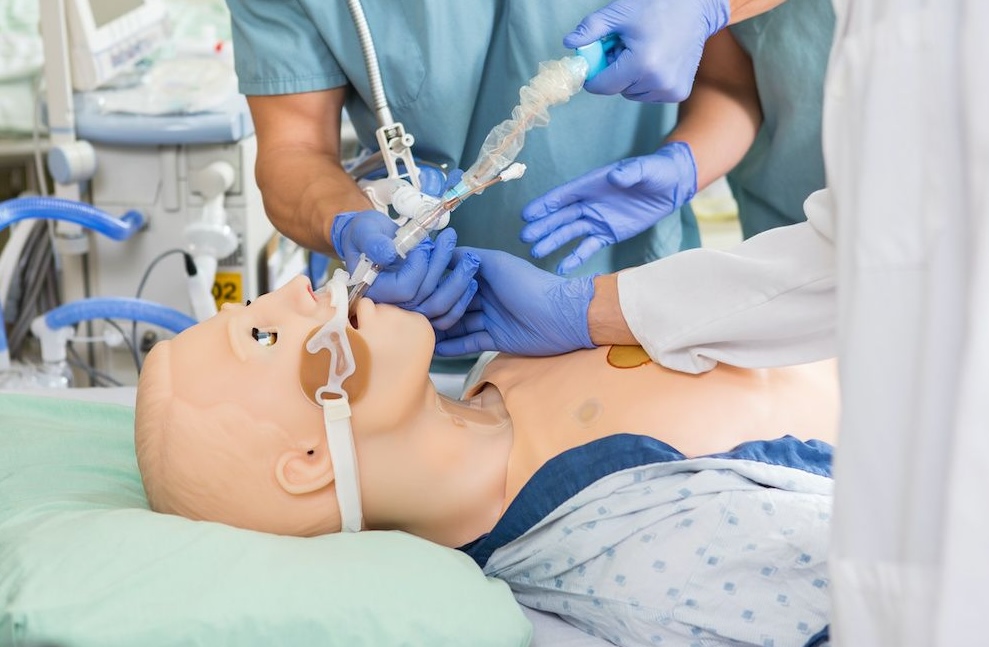Debriefing is one of the most important components of healthcare simulation based education sessions. Many of those in the healthcare simulation field will share freely that educators perform a clinical simulation education session in order to debrief. This HealthySimulation article will explore how to start out as a beginner debriefer in clinical simulation. While debriefing can be daunting at first, the insights gained will provide comfort and encouragement to the amateur debriefer.
Debriefing can be a tough skill to utilize effectively for even the most seasoned educator. Witnessing experienced clinical debriefers run a healthcare simulation debrief often appears seamless, but this unique skill set may take months if not years to perfect. With practice and a growth mindset, high quality clinical simulation debriefing is possible for any clinical educator. Comfort in the debriefing room will come over time but the fact remains that even the experts will make mistakes, and seasoned debriefers should attempt to be transparent in regards to any errors or shortcomings.
Many educators do not receive any formalized training in debriefing and must learn by osmosis from those around them that effectively utilize debriefing as a learning tool. Other clinical education faculty may have been placed into a debriefing role many years ago and learned through trial and error to create a personal debriefing ideology. Currently, there is an increasing amount of focus around developing psychologically safe work environments, culture, and participant safety of adult learners and this extends to healthcare simulation. The creation and persistent maintenance of a psychologically safe learning environment as a debriefer is a key factor to a successful debrief for all participants and ensures that the maximum amount of learning can occur.
As clinical simulation debriefers look into incorporating aspects of psychological safety along with equity, diversity and inclusion, debriefing in a safe manner becomes critical. Allowing clinical simulation participants to feel safe in their learning environment means that participants will share more easily and be vulnerable in the debrief than if a safe learning container is not created. An increase in vulnerability and sharing means that healthcare simulation participants get the highest value out of their clinical simulation and debrief experience. The learning from these safe learning spaces translates into deeper learning for the participant and improved care for patients and families.
As much as partaking in some debriefing instruction is essential, the little things educators can do to ensure their clinical simulation sessions are a safe learning space everyday matters. Psychological safety should be paramount for all clinical simulationists at every stage from the advertisement of courses through to post course evaluations. Utilizing good judgment and maintaining a curious mindset is critical for debriefers to be successful facilitators of any healthcare simulation.
There are a number of different clinical simulation debrief modalities available either for free or through attendance at various courses, which include Debriefing with Good Judgement, Gather, Analyze, Summarize Method (GAS), Debrief as a Learning Conversation, SHARP – Imperial College London, Bubble Briefs and others. If the option is present to attend in person training with experienced clinical simulation tutors the depth of learning from this experience can be invaluable. Although each debriefing modality has different structures, most modalities include key attributes that include:
- A group sharing experience of the simulation where learners discuss their feelings and attitude towards the experience they all just participated in.Utilize the information shared in this phase to inform what the participants are wanting to talk and learn about.
- Clarification of the case medically that often includes a content expert for specific information about the case.
- The identification and subsequent closing of either performance or knowledge gaps.
Some educators may find a specific modality helpful while others prefer to be trained in multiple approaches and adapt to the specific medical simulation scenario. Though there are many ways to debrief clinical simulation based education sessions, clarity amongst faculty prior to any simulated session on which modality is to be utilized for that event will ensure success and reduce any chance of confusion.
After simulation faculty have been exposed to the various modalities of debriefing in medical simulation the next step is to plan for the facilitation of a debriefing experience. This training saves time as the faculty member experiences the event from both the clinical simulation participant and observer roles and takes the learning from training into practice. Ensuring that the faculty have adequate preparation time and any prompts that may be required in the session readily available is important to making this training high-yield. Scheduling time for the faculty member to have a discussion with an experienced debriefer prior to a clinical simulation is another way to increase the comfort of the novice debriefer. The experienced debriefer is then able to give a review of the debriefing process, identify a clear plan for the case, and review potential stumbling points to increase the confidence of the novice debriefer prior to the session.
Should the debriefer experience difficulties during the debrief the facilitator should know that each modality has approaches of how to troubleshoot issues that may arise during a debrief. When just starting out in debriefing, adhering to what they have been trained on will serve any faculty member will be important to ensuring that the debrief stays productive. Remember that while clinical debriefers are meant to provide guidance for the learners and structure to the conversation, the goal of the debriefer should be to add to the experience, not take it over. The debrief is for the learners to gain knowledge and context from their recent experience in the clinical simulation scenario with the debriefers being an aid in that process.
View HealthySimulation.com’s Recent Webinars on Debriefing Best Practices:
- Virtual Debriefing: Styles, Options, and Insights
- Using Recorded Video to Debrief Hospital-Based Medical Simulation Experiences
- Healthcare Simulation Debriefing Strategies & Courses from Top Experts at The Debriefing Academy
Having an experienced colleague serve as a co-debriefer to help a newer faculty feel comfortable is also a great asset while learning how to debrief. This additional person is able to give the novice recommendations and can intervene if required. Should the debrief start to go on a tangent that is no longer conducive to learning, allowing assistance from the expert to redirect the conversation back to the standard debriefing structure.
Faculty attempting to incorporate debriefing into their medical simulation practice should avoid being overly self-critical when learning the art of debriefing in the clinical simulation setting. Safe and constructive feedback from other faculty is the most efficient way for faculty to improve their debriefing ability. The feedback given from peers can be either formal or informal in nature and should allow for reflection time on the experience of leading a debrief. When accompanied with time, patience, and faculty support, debriefing is an incredibly valuable skill for a member of a clinical simulation faculty program to possess.








